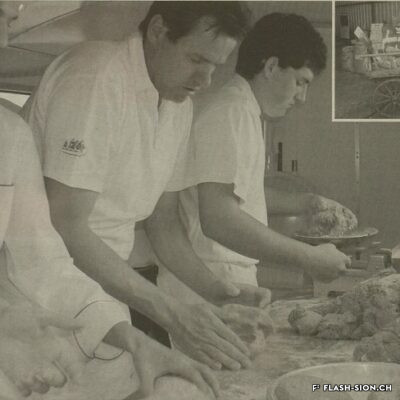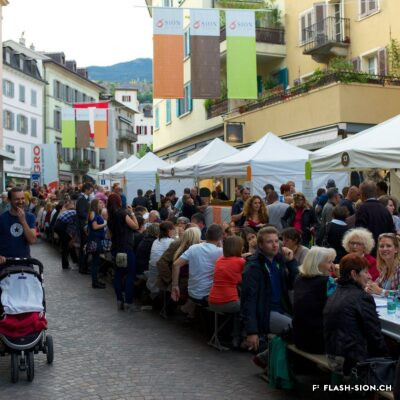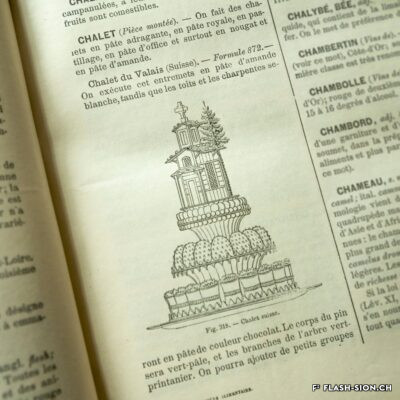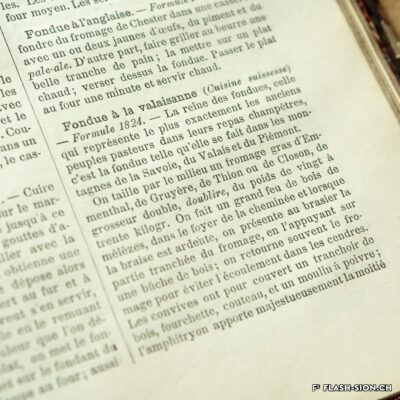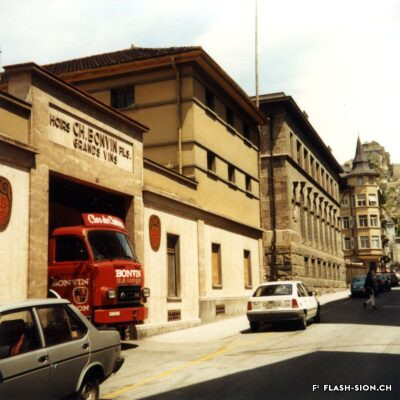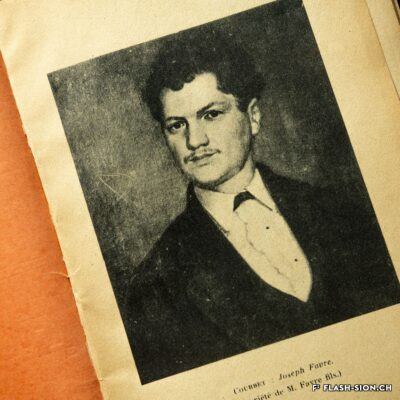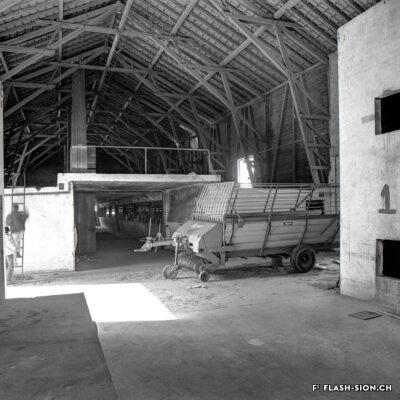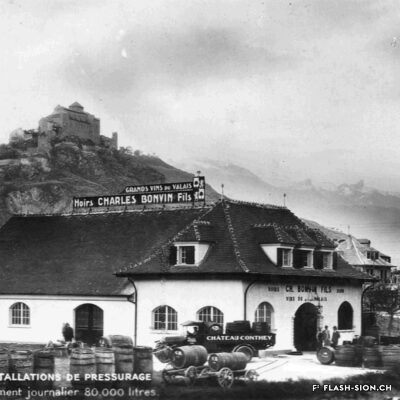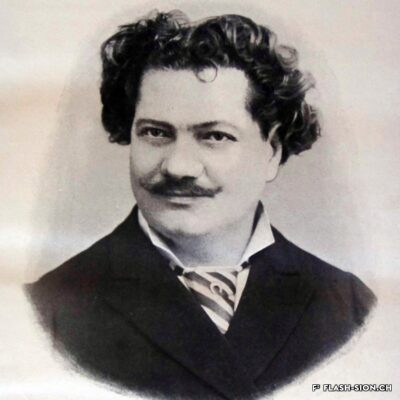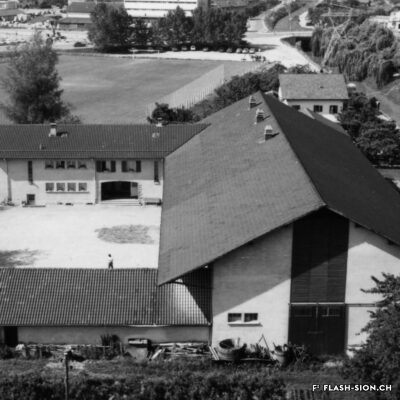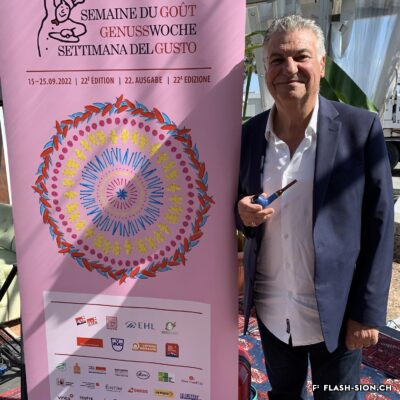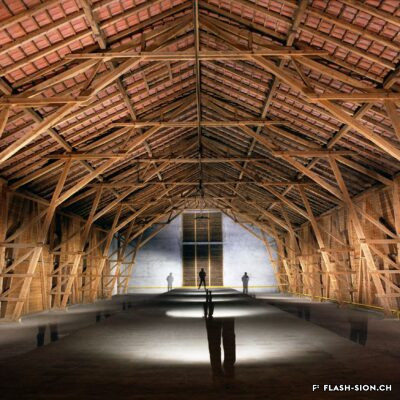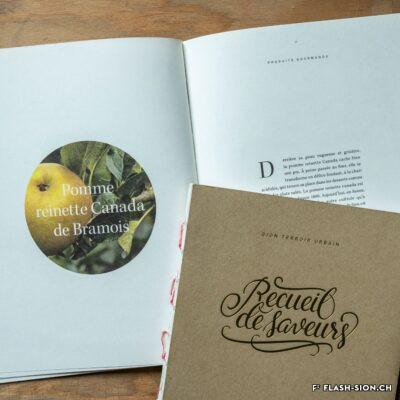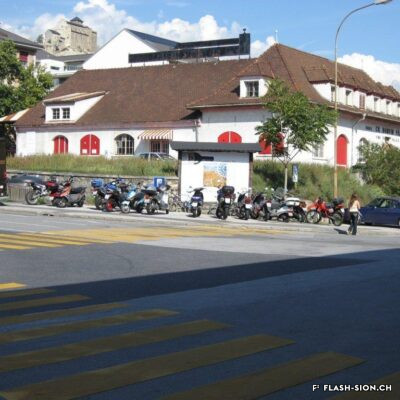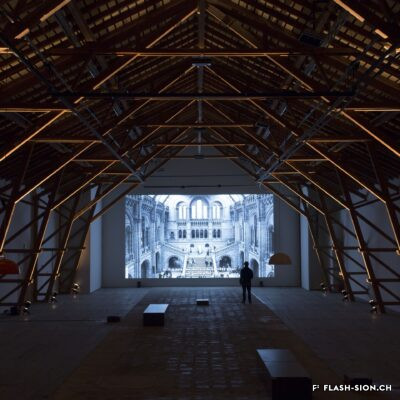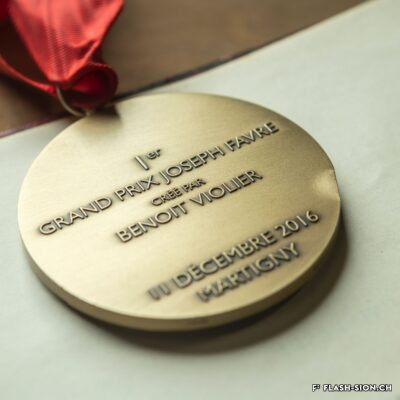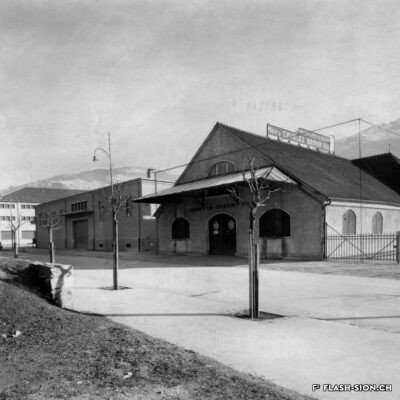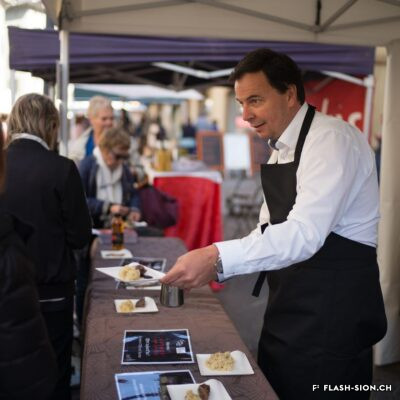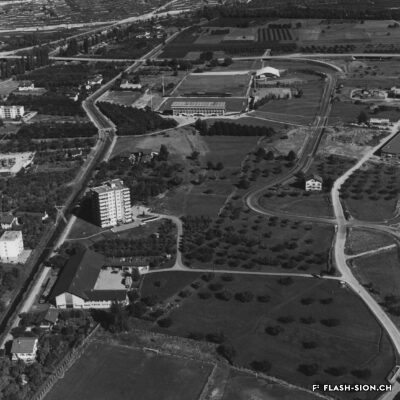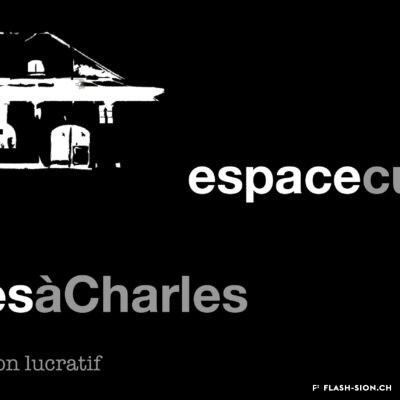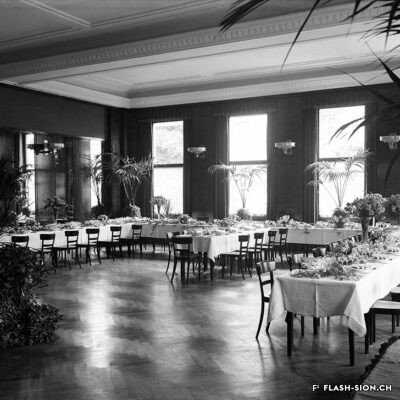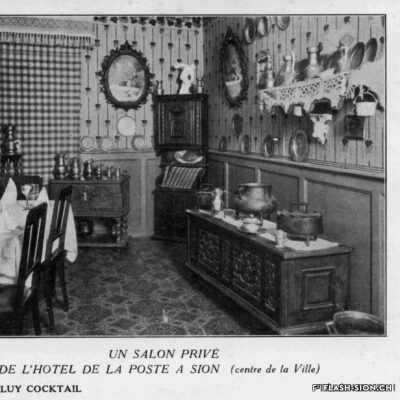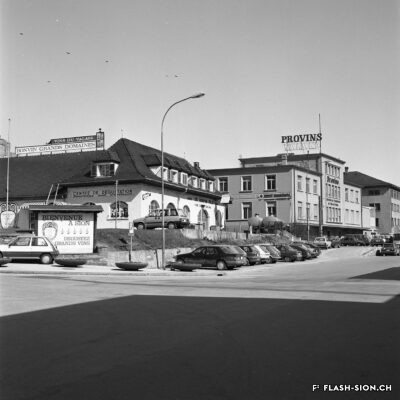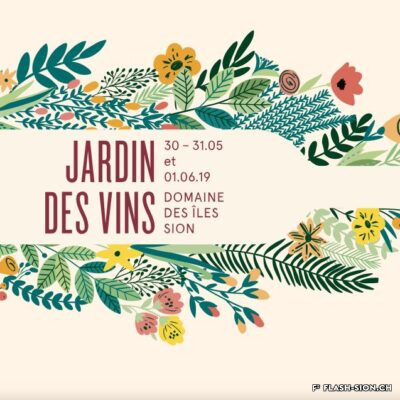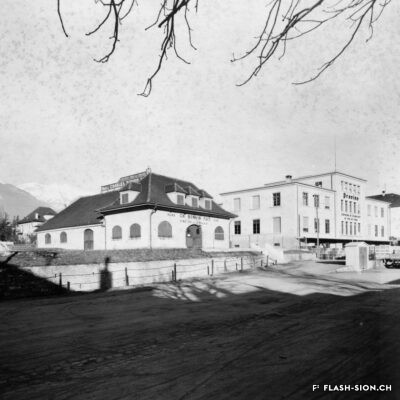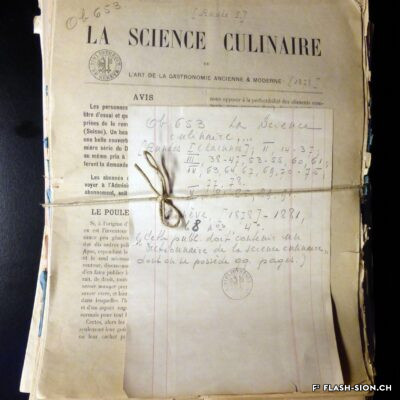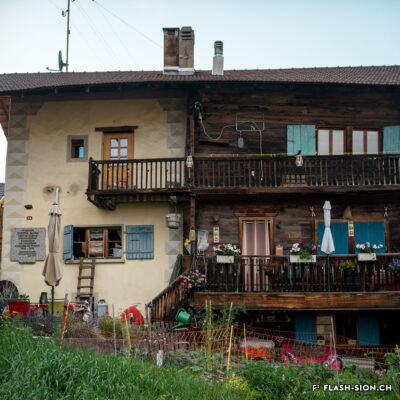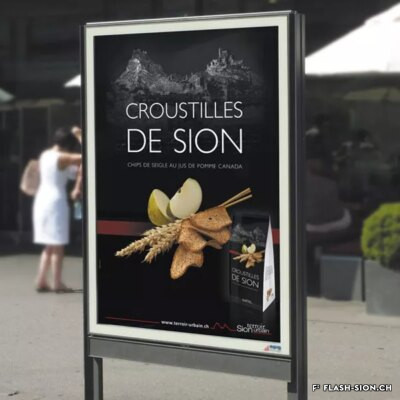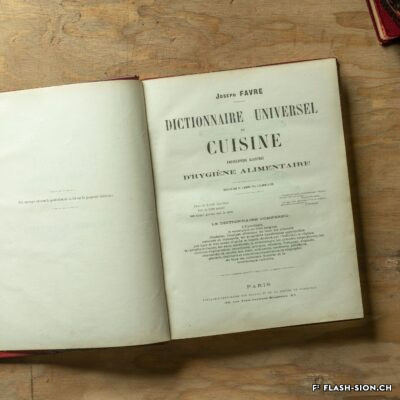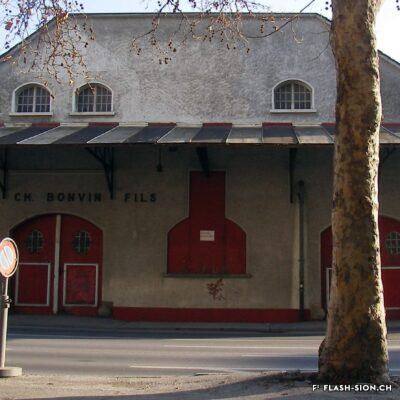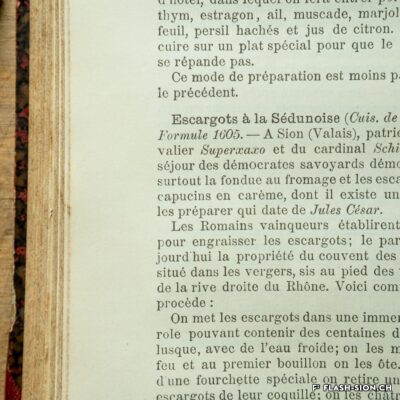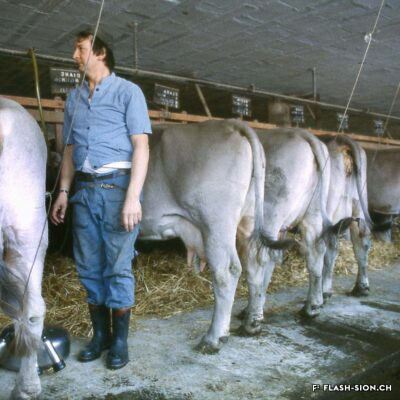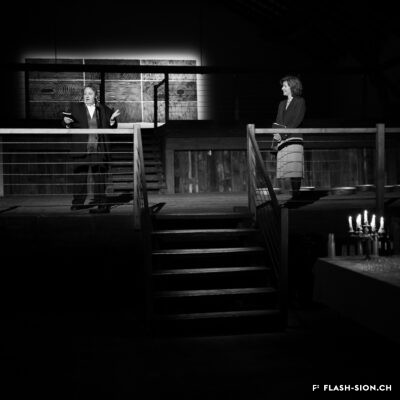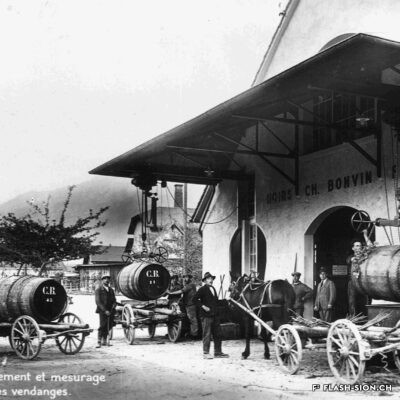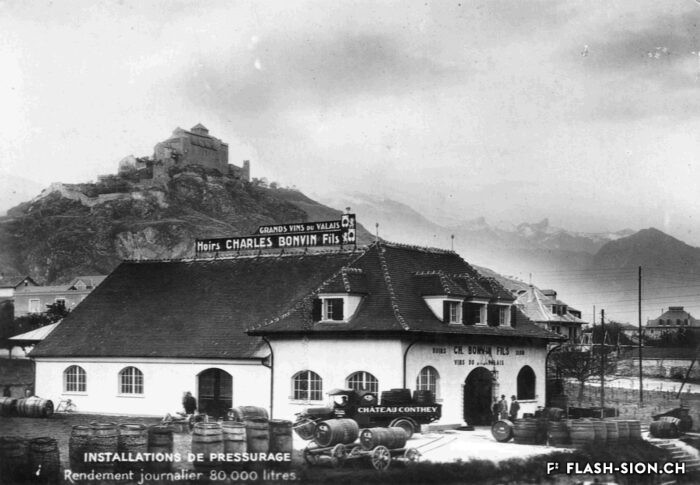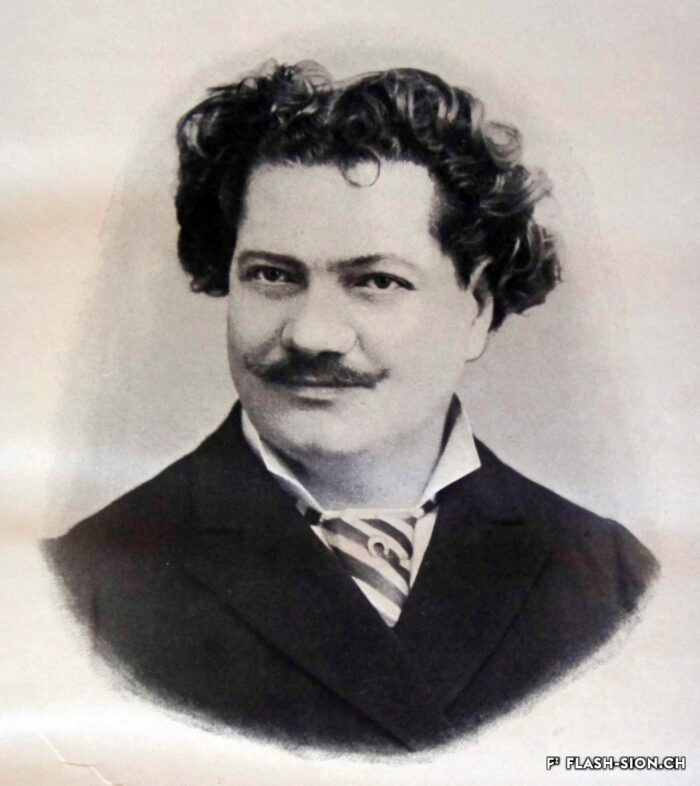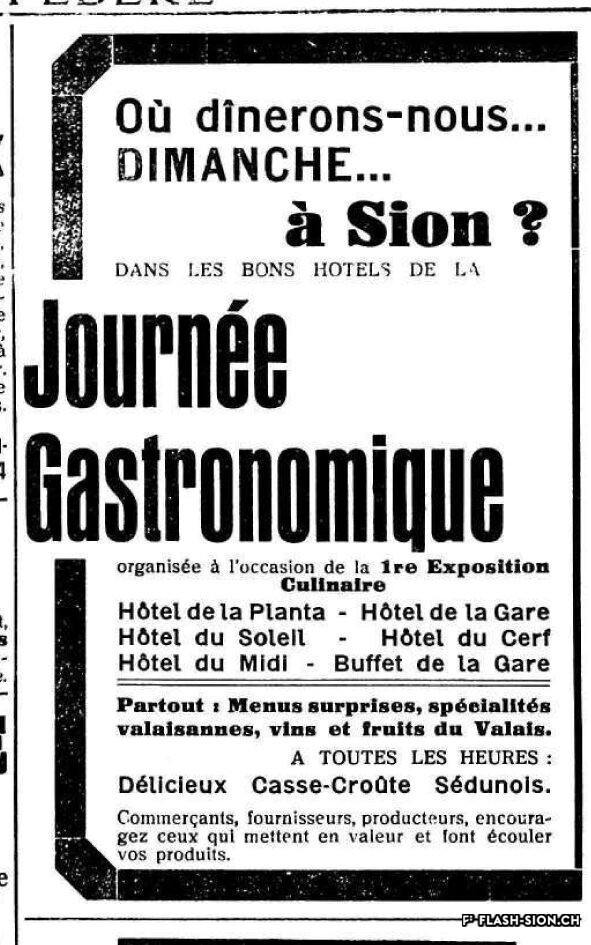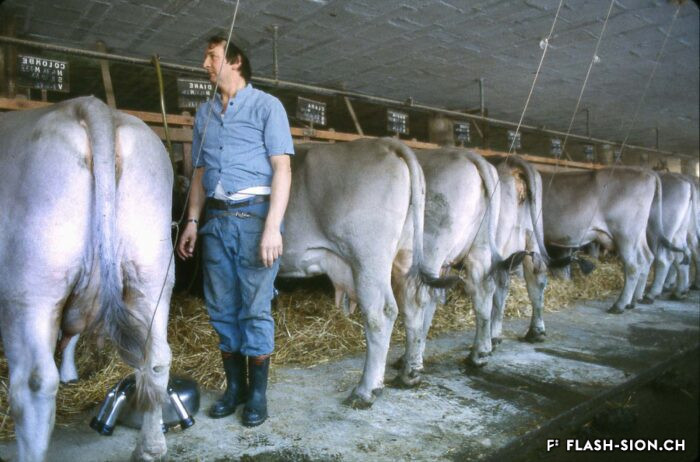Charles et les caves festives
Fondée en 1858, la maison sédunoise des Hoirs Charles Bonvin Fils fait figure de pionnière en matière de commerce vinicole en Valais. Charles-Marie Bonvin, son fondateur, donne l’impulsion au domaine et fait connaître les vins valaisans hors du canton et de la Suisse. Son fils Charles (1858-1922) prend la relève et à sa suite, ses deux fils, Charles (1888-1937) puis Félix. Aux caves et bureaux de la rue des Vergers et de la rue des Remparts s’ajoutent en 1932, les pressoirs de l’avenue de Tourbillon, face à la gare. Ces derniers deviennent alors un centre moderne de pressurage et d’encavage, jusqu’au début des années 1990. Désaffectés pendant de nombreuses années, ces pressoirs à l’abandon attirent l’attention d’un collectif qui y voit un potentiel culturel et souhaite leur redonner vie de façon éphémère. En 2008 et durant une année, l’association « Les Caves à Charles » fait vibrer ce lieu industriel chargé d’histoire, pour lui rendre un dernier hommage avant sa démolition.
Charles und die festliche Kellerei
Die 1858 in Sitten gegründete Weinkellerei der Erben von Charles Bonvin und Söhne gilt als Pionierin des Weinhandels im Wallis. Charles-Marie Bonvin, Begründer des Hauses, verstand es, den Walliser Wein ausserhalb des Kantons und der Schweiz bekannt zu machen. Der Betrieb wird in der Folge von seinem Sohn Charles (1858-1922) übernommen bevor dessen Söhne Charles (1888-1937) und später Félix die Nachfolge antreten. Zum Weinkeller und den Büroräumlichkeiten in der Rue des Vergers und der Rue des Remparts gesellt sich 1932 das Gebäude mit Weinpresse an der Avenue de Tourbillon, direkt gegenüber dem Bahnhof. Dieses entwickelt sich bis anfangs der 1990er Jahre zu einer modernen Kelterei mit Weinkeller. Danach bleibt das Gebäude während einiger Jahre ungenutzt. 2008 interessiert sich ein Kollektiv für die Kelterei und sieht deren Potenzial für eine kurzfristige kulturelle Nutzung. Während einem Jahr bringt der Verein «Les Caves à Charles» den geschichtsträchtigen Ort nochmals zum Schwingen und erweist ihm, bevor er abgebrochen wird, die letzte Ehre.
Charles and the festive wine cellars
Founded in 1858, the Sion-based company of Hoirs Charles Bonvin Fils is a pioneer in the wine trade in Valais. Charles-Marie Bonvin, its founder, provided the impetus to the estate and made Valais wines known outside the canton and Switzerland. His son Charles (1858-1922) took over and was followed by his two sons, Charles (1888-1937) and Félix. In 1932, the cellars and offices in the ‘Rue des Vergers’ and the ‘Rue des Remparts’ were completed by the addition of wine presses in the ‘Avenue de Tourbillon’, opposite the railway station. They became a modern pressing and cellaring centre until the early 1990s. Disused for many years, these abandoned wine presses attracted the attention of a group who saw a cultural potential in them and wanted to bring them back to life in a temporary way. In 2008 and for one year, the Charles Cellars Association (Les Caves à Charles) filled this industrial site, full of history, with life and paid it a last tribute before its demolition.
Charles e le cantine in festa
Fondata nel 1858, l’azienda sedunese Hoirs Charles Bonvin Fils, è una pioniera del commercio di vino nel Vallese. Charles-Marie Bonvin, il suo fondatore, diede impulso alla tenuta e fece conoscere i vini del Vallese al di fuori del cantone e della Svizzera. Il figlio Charles (1858-1922) prese il testimone e fu seguito dai suoi due figli, Charles (1888-1937) e Félix. Nel 1932, alle cantine e agli uffici nella Rue des Vergers e nella Rue des Remparts si aggiunsero i torchi di Avenue de Tourbillon, di fronte alla stazione. In seguito, fino all’inizio degli anni Novanta, si sono trasformati in un moderno centro di pressatura e cantina. In disuso da molti anni, questi torchi abbandonati hanno attirato l’attenzione di un gruppo che ha visto in essi un potenziale culturale e ha voluto riportarli in vita in modo temporaneo. Nel 2008 e per un anno, l’associazione “Les Caves à Charles” (Le cantine di Charles) ha riportato in vita questo luogo industriale ricco di storia, per rendergli un ultimo omaggio prima della sua demolizione.
Un cuisinier avant-gardiste
En matière de gastronomie, l’histoire a longtemps oublié un enfant du pays. Originaire de Vex, un certain Joseph Favre (1844-1903) s’illustre en tant que pionnier de la « science et de l’hygiène culinaire ». Après un apprentissage de trois ans, vraisemblablement à l’Hôtel de la Poste, à l’époque l’un des plus prestigieux hôtels de Sion, il sillonne la Suisse et l’Europe pour parfaire son art. Anarchiste à ses heures, Joseph Favre se fait surtout connaître par son acharnement à rendre à la cuisine ses lettres de noblesse. Il publie notamment dès 1877 le premier journal de cuisine écrit par des cuisiniers et participe aux premiers concours et expositions culinaires. Dès 1883, ce théoricien progressiste consacre sa vie à la rédaction de son monumental « Dictionnaire universel de cuisine pratique et d’hygiène alimentaire ». Il est également à l’origine de la fondation de l’Académie culinaire de France en 1883.
Ein fortschrittlicher Koch
Im Bereich der Gastronomie blieb der Walliser Joseph Favre (1844-1903) der breiten Öffentlichkeit lange unbekannt. Der aus Vex stammende Koch hat sich als Pionier der Kulinarik und wissenschaftlichen Küchenhygiene bekannt gemacht. Nach einer dreijährigen Lehre, vermutlich im damals renommierten Hotel Post in Sitten, bereist er die Schweiz und Europa und erweitert seine Kochkunst. Kurze Zeit einer anarchistischen Bewegung verschrieben, zeichnet sich Favre insbesondere durch sein hartnäckiges Engagement für eine moderne Ess- und Kochkultur aus. Ab 1877 veröffentlicht er die erste, von einem Koch verfasste Kochzeitschrift und nimmt an ersten Kochwettbewerben und kulinarischen Ausstellungen teil. Ab 1883 widmet sich der fortschrittliche Theoretiker ganz dem Verfassen seines bedeutendsten Werkes, dem «Universallexikon des Kochens und der Lebensmittelhygiene». Er ist ebenfalls Begründer der 1883 entstandenen «Académie culinaire de France».
An avant-garde cook
When it comes to gastronomy, history has long forgotten a local youngster. Originally from Vex, a certain Joseph Favre (1844-1903) distinguished himself as a pioneer of “culinary science and hygiene”. After a three-year apprenticeship, probably at the Hôtel de la Poste, which was one of the most prestigious hotels in Sion at the time, he travelled throughout Switzerland and Europe to perfect his art. An anarchist at times, Joseph Favre is best known for his determination to give nobility back to cuisine. In 1877, he published the first cooking journal written by cooks and he took part in the first culinary competitions and exhibitions. From 1883, this progressive theorist devoted his life to writing his monumental “Universal Dictionary of Practical Cooking and Food Hygiene”. He was also a founder of the French Culinary Academy in 1883.
Un cuoco d’avanguardia
Quando si parla di gastronomia, la storia ha dimenticato da tempo un ragazzo del posto. Originario di Vex, un certo Joseph Favre (1844-1903) si distinse come pioniere della “scienza e dell’igiene culinaria”. Dopo un apprendistato di tre anni, probabilmente presso l’Hôtel de la Poste, all’epoca uno degli alberghi più prestigiosi di Sion, viaggiò in tutta la Svizzera e in Europa per perfezionare la sua arte. A volte anarchico, Joseph Favre è noto soprattutto per la sua determinazione a dare alla cucina le sue lettere di nobiltà. Nel 1877 pubblicò il primo giornale di cucina scritto da cuochi e partecipò ai primi concorsi e mostre culinarie. A partire dal 1883, questo teorico progressista si dedicò alla stesura del suo monumentale “Dictionnaire universel de cuisine pratique et d’hygiène alimentaire”. A lui si deve anche la fondazione dell’Accademia culinaria francese nel 1883.
Sion, la gourmande
Le 17 novembre 1935, les salons de l’Hôtel de la Planta accueillent la première exposition et concours d’art culinaire du Valais. Si la mise en valeur des produits du pays et l’art culinaire sont représentés lors de fêtes des vignerons, il faudra cependant attendre 1973 pour voir s’organiser, à Sierre, un autre concours culinaire. A cette occasion, un membre du jury souligne déjà à quel point l’art du bien manger est en train de se perdre. L’avènement du fast-food et l’industrialisation de la filière alimentaire renforcent encore ce constat qui conduit à l’organisation de la première semaine romande du goût en 2001. Sion participe à la manifestation annuelle dès 2003 et est d’emblée élue ville du goût. Forte de cette expérience et pouvant compter sur des acteurs locaux enthousiastes, la nouvelle politique touristique adoptée dès 2007 positionne Sion comme ville du goût. Depuis, la ville étoffe son offre touristique autour du label « Sion terroir urbain ».
Sitten, die Genüssliche
Am 17. November 1935 findet in den Sälen des Hotels de la Planta die erste kulinarische Ausstellung des Wallis mit Kochwettbewerb statt. Obwohl Winzerfeste darauf die regionalen Produkte und die Kochkunst des Wallis würdigen, kommt es erst 1973 in Sierre zu einem weiteren Kochwettbewerb. Bei dieser Gelegenheit spricht ein Jurymitglied bereits seine Besorgnis über den zunehmenden Verlust des guten Essens aus. In der Folge verstärken das Aufkommen von Fastfood und die Industrialisierung der Lebensmittelkette zusätzlich die Junkfood-Welle, die 2001 massgeblich zur Organisation der ersten Westschweizer Genusswoche führt. Sitten nimmt ab 2003 an dieser jährlichen Veranstaltung teil und wird auf Anhieb zur Genussstadt des Jahres gewählt. Diese positive Erfahrung und die Begeisterung der lokalen Akteure ermutigen die Behörden, über ihre neue Tourismuspolitik Sitten als Genussstadt zu positionieren. Seither baut die Stadt ihr touristisches Angebot rund um die Marke «Sion, terroir urbain» kontinuierlich aus.
Sion, city of food lovers
On November 17, 1935, the lounges of the Hôtel de la Planta hosted the first exhibition and competition of culinary art in the canton of Valais. Even though the promotion of the country’s products and the culinary art were present at the time of wine festivals, it was necessary to wait until 1973 to see another culinary contest being organised in Sierre. Already on that occasion, a jury member emphasized the degree to which the art of eating well was being lost. This observation was further reinforced by the arrival of fast food and the industrialisation of the food sector, resulting in the organisation of the first Week of Taste in French-Speaking Switzerland in 2001. Sion first took part in the annual event in 2003 and was immediately elected City of Taste. Benefiting from this experience and being able to count on enthusiastic local players, the new tourism policy, adopted in 2007, positioned Sion as a City of Taste. Since then, the city has been developing its tourism offer around the label “Sion urban terroir”.
Sion, la buongustaia
Il 17 novembre 1935, i saloni dell’Hôtel della Planta ospitarono la prima mostra e concorso di arte culinaria del Vallese. Sebbene la promozione dei prodotti locali e l’arte culinaria fossero presenti nelle feste del vino, solo nel 1973 è stato organizzato un altro concorso culinario a Sierre. In questa occasione, uno dei membri della giuria ha sottolineato quanto si stia perdendo l’arte di mangiar bene. L’avvento dei fast food e l’industrializzazione dell’industria alimentare hanno rafforzato ulteriormente questa osservazione, che ha portato all’organizzazione della prima Settimana del Gusto francofona nel 2001. Sion ha partecipato all’evento annuale dal 2003 ed è stata subito eletta città del gusto. Forte di questa esperienza e potendo contare su attori locali entusiasti, la nuova politica turistica adottata nel 2007 ha posizionato Sion come città del gusto. Da allora, la città ha sviluppato la sua offerta turistica attorno al marchio “Sion terroir urbain”.
De la ferme au centre culturel
La Ferme-Asile n’a pas toujours été le centre polyvalent dédié à l’art contemporain qu’il est aujourd’hui. Autrefois ferme de l’Hôpital-Asile, l’exploitation approvisionnait l’hôpital de Sion de 1955 à 1984. Laissé à l’abandon en pleine zone urbaine durant une dizaine d’années, ce témoin unique de l’activité agricole sédunoise des années 1950 suscite l’intérêt d’un groupe d’artistes, qui y voit l’opportunité de créer un lieu pluridisciplinaire vecteur de synergies culturelles. Ce centre artistique, nommé tout d’abord « Centre Culturel LézArt » voit le jour et se développe grâce à l’investissement d’artistes et de bénévoles. Depuis 1996, la bâtisse transformée abrite des ateliers d’artistes et un restaurant. Des expositions temporaires y sont régulièrement organisées. Au gré des financements et des agrandissements, l’établissement ouvre salle de concert, nouveaux espaces et ateliers supplémentaires. La rénovation de 2009 permet enfin l’utilisation sur toute l’année de la grange à la charpente impressionnante.
Vom Bauernhof zum Kulturzentrum
Heute widmet sich das vielseitige Zentrum der «Ferme-Asile» der zeitgenössischen Kunst – das war nicht immer so. Der ehemalige Bauernhof des Burgerspitals versorgte von 1955 bis 1984 das Krankenhaus von Sitten. Dieser einzigartige landwirtschaftliche Zeitzeuge der 1950er Jahre weckte das Interesse einer Gruppe von Kunstschaffenden, die hier einen multidisziplinären Ort einrichten wollten, um kulturelle Synergien zu nutzen. Das “Centre Culturel LézArt”, wie anfangs das Kulturzentrum genannt wurde, konnte nur dank grossem Engagement der beteiligten Kunstschaffenden und ehrenamtlicher Arbeit eröffnet werden. Seit 1996 beherbergen die umgebauten landwirtschaftlichen Gebäude Künstlerateliers und ein Restaurant. Es werden regelmässig Wechselausstellungen gezeigt. Durch weitere Finanzierungsmittel konnten im Laufe der Jahre ein Konzertsaal, neue Räumlichkeiten und zusätzliche Ateliers eröffnet werden. Die Renovation von 2009 ermöglicht nun die ganzjährige Nutzung der Scheune mit ihrem imposanten Dachstuhl.
From being a farm to becoming a cultural centre
The Ferme-Asile was not always the multi-purpose centre dedicated to contemporary art that it is today. Formerly the farm of the Hôpital-Asile, it supplied the hospital of Sion from 1955 to 1984. Left abandoned in the middle of an urban area for about ten years, this unique witness to the agricultural activity of Sion in the 1950s aroused the interest of a group of artists, who saw in it the opportunity to create a multi-disciplinary venue, a vector of cultural synergies. The artistic centre, initially named “Centre Culturel LézArt”, was born and developed thanks to the investment of artists and volunteers. Since 1996, the transformed building has housed artists’ studios and a restaurant. Temporary exhibitions are regularly held there. As funding was received and extensions were built, the establishment opened a concert hall, new rooms and additional workshops. The renovation in 2009 finally made it possible to use the barn with its impressive roof structure all year round.
Da fattoria a centro culturale
La Ferme-Asile non è sempre stata il centro polifunzionale dedicato all’arte contemporanea che è oggi. Un tempo fattoria dell’ospedale psichiatrico, ha rifornito l’ospedale di Sion dal 1955 al 1984. Abbandonata per dieci anni nel bel mezzo di un’area urbana, questa testimonianza unica dell’attività agricola sedunese negli anni Cinquanta ha suscitato l’interesse di un gruppo di artisti che hanno visto in essa l’opportunità di creare un luogo multidisciplinare, vettore di sinergie culturali. Questo centro artistico, inizialmente denominato “Centre Culturel LézArt”, è nato e si è sviluppato grazie all’investimento di artisti e volontari. Dal 1996, l’edificio trasformato ospita ateliers di artisti e un ristorante. Inoltre, vi si tengono regolarmente mostre temporanee. Grazie ai finanziamenti e agli ampliamenti, lo stabilimento ha aperto una sala concerti, nuovi spazi e ateliers. La ristrutturazione del 2009 ha finalmente consentito di utilizzare tutto l’anno il fienile con la sua imponente struttura del tetto.
